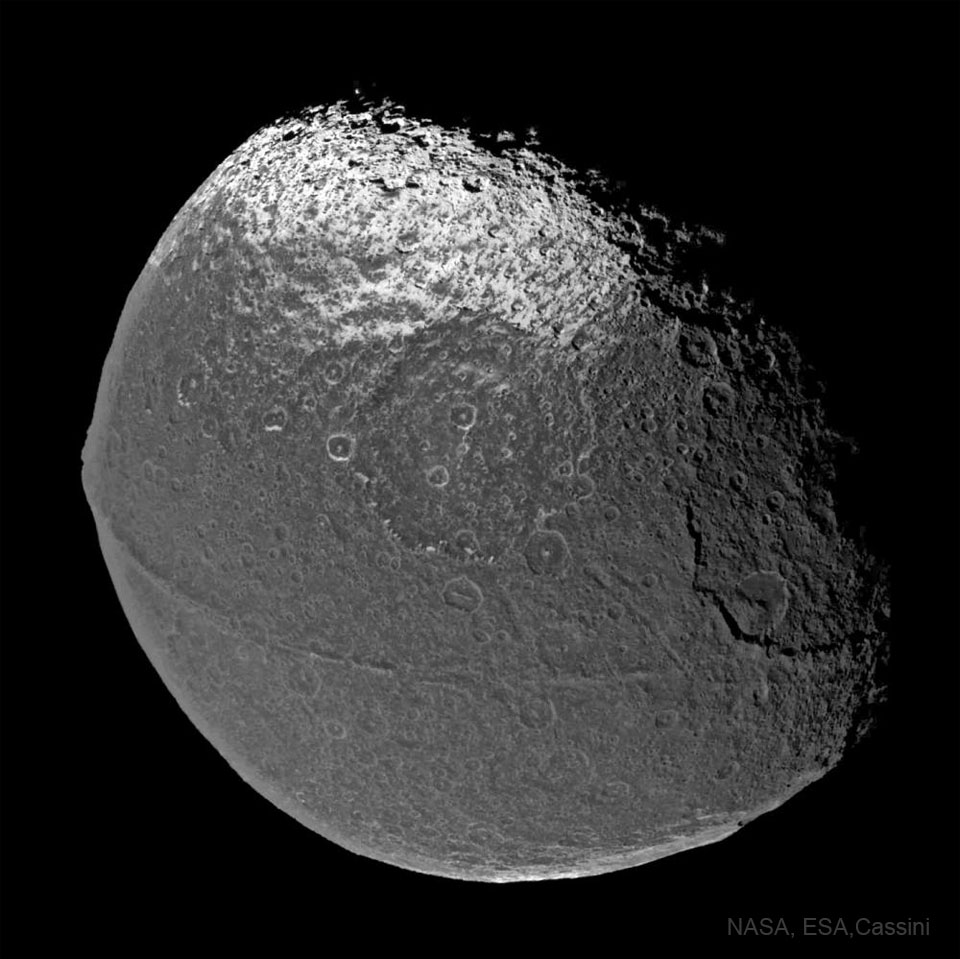2023年2月26日
Saturn’s Iapetus: Moon with a Strange Surface
Image Credit: NASA, ESA, JPL, SSI, Cassini Imaging Team
Explanation: What would make a moon look like a walnut? A strange ridge that circles Saturn’s moon Iapetus’s equator, visible near the bottom of the featured image, makes it appear similar to a popular edible nut. The origin of the ridge remains unknown, though, with hypotheses including ice that welled up from below, a ring that crashed down from above, and structure left over from its formation perhaps 100 million years ago. Also strange is that about half of Iapetus is so dark that it can nearly disappear when viewed from Earth, while the rest is, reflectively, quite bright. Observations show that the degree of darkness of the terrain is strangely uniform, as if a dark coating was somehow recently applied to an ancient and highly cratered surface. Last, several large impact basins occur around Iapetus, with a 400-kilometer wide crater visible near the image center, surrounded by deep cliffs that drop sharply to the crater floor. The featured image was taken by the Saturn-orbiting Cassini spacecraft during a flyby of Iapetus at the end of 2004.
Tomorrow’s picture: dawn before dawn
土卫八: 有怪异表面的卫星
图像提供: NASA, ESA, JPL, SSI, Cassini Imaging Team
说明: 为何卫星会长得像颗核桃?如这幅主题图像底部所示,土星的卫星土卫八(Iapetus)有道环拱的赤道突脊,让它看起来像颗寻常可食的核桃。虽然这道突脊的出处仍然不明,但是其起源目前有多种假说,包括从下方涌出的冰、从上方坠落的卫星环,以及大约1亿年前这颗卫星形成时孑遗的结构。而同样怪异的是,大约有一半的土卫八极为黝黑,以至于从地球看去它几乎消失,而其余的表面则是非常明亮的反射区。观测证实这片原野的黝黑程度出奇的均匀,就好像是最近以某种方式,在古老且满布撞击坑的表面上抹上暗色涂层。最后,土卫八的表面上有数个大撞击盆地,包括位在图像中心附近的400公里宽撞击坑,其坑墙是直插坑底的陡峭悬崖。这幅主题图像,是由绕行土星的卡西尼号飞船,摄于2004年底飞越土卫八之时。
明日的图片: dawn before dawn



